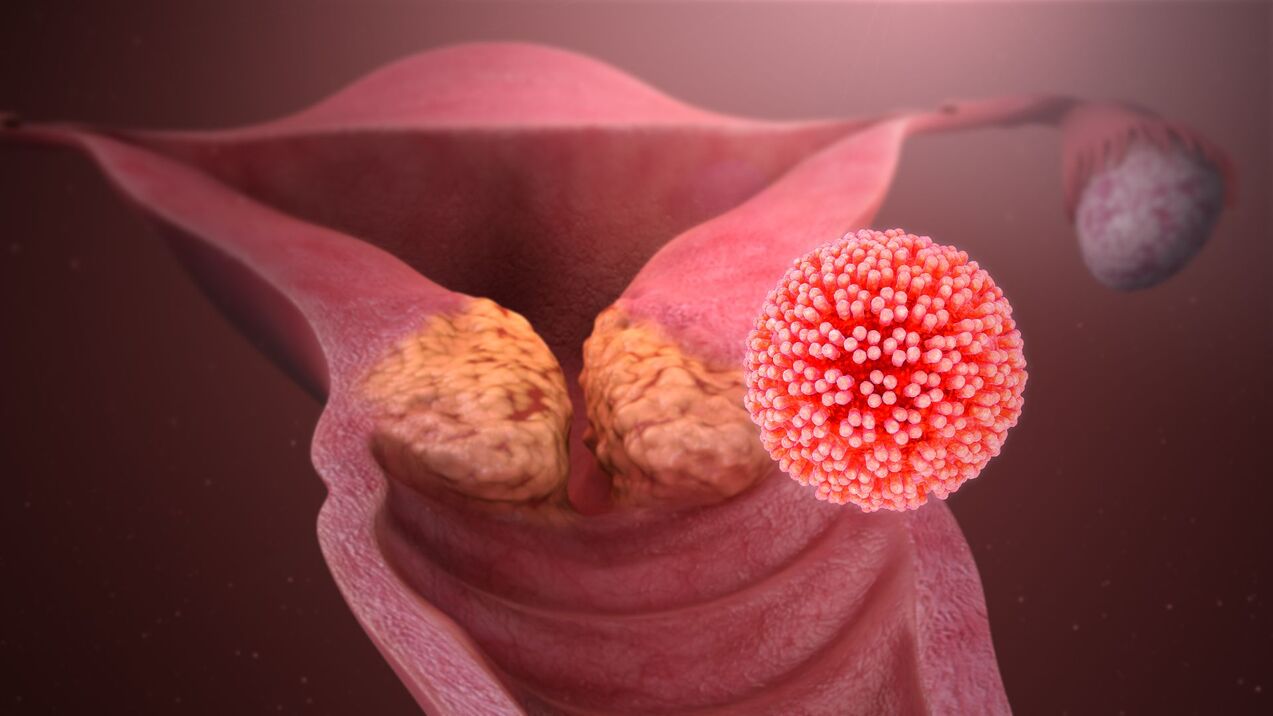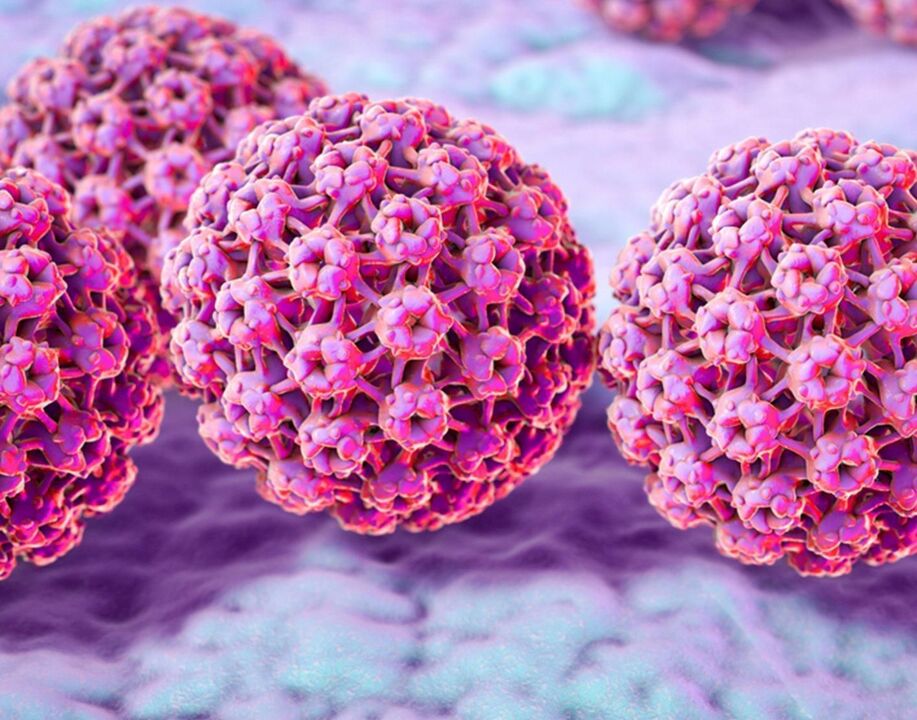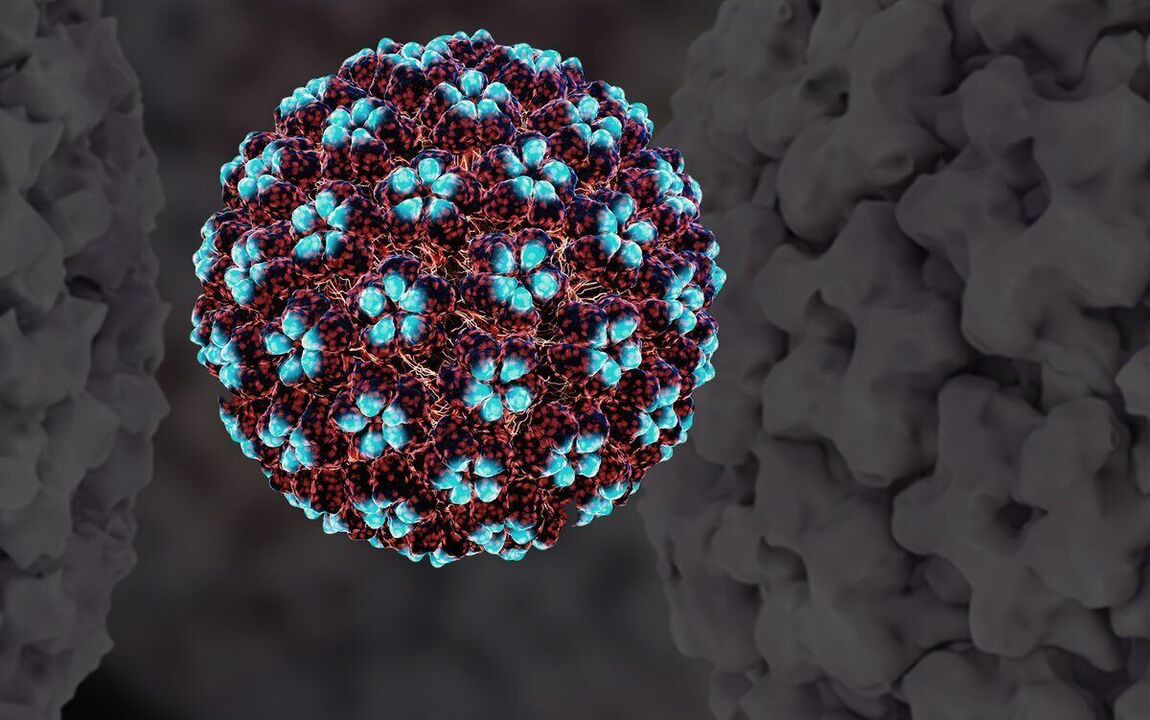Human papillomavirus (HPV) is the most common sexually transmitted infection in the world.
The peculiarity of this infection is that although it does not manifest itself for many years, it can eventually lead to the development of benign (papilloma) or malignant (cervical cancer) diseases of the genital organs.

Types of human papillomavirus
More than 100 types of HPV are known. The types are different "subtypes" of the virus that differ from each other. Species are identified by the numbers assigned to them as they are detected.
The high oncogenic risk group consists of 14 types: 16, 18, 31, 33, 35, 39, 45, 51, 52, 56, 58, 59, 66, 68 (these types are associated with the development of cervical cancer).
In addition, low oncogenic risk types are known (mainly 6 and 11). They cause anogenital warts (genital warts, papillomas). Papillomas are located in the mucous membrane of the vulva, vagina, perianal area, the skin of the genitals. They are almost never malignant, but cause significant cosmetic defects in the genital area. Warts on other parts of the body (hands, feet, face) can also be caused by this type of virus or can be of different origins. In the following articles, we will discuss the "high risk" and "low risk" types of HPV separately.
Human papillomavirus infection
The virus is mainly sexually transmitted. Almost all women become infected with HPV sooner or later: up to 90% of sexually active women will experience the infection for the rest of their lives.
But the good news is: the vast majority of those infected (about 90%) will recover from HPV within two years without any medical intervention.
This is the normal course of the infectious process caused by HPV in the human body. This period is enough for the human immune system to completely get rid of the virus. In this case, HPV will not cause any harm to the body.That is, if HPV was detected some time ago, but not now, it is completely normal!
It should be borne in mind that the immune system works "at different speeds" in different people. In this regard, the rate of recovery from HPV may be different for sexual partners. Therefore, when HPV is detected in one of the partners, a situation is possible, not in the other.

Most people become infected with HPV shortly after they become sexually active, and many will never know they are infected. Permanent immunity does not develop after infection, so it is possible to re-infect both the same virus and other types of viruses that have already been encountered.
"High-risk" HPV is dangerous because it can lead to the development of cervical cancer and some other types of cancer. "High risk" HPV does not cause other problems.
HPV does not cause inflammation, menstrual irregularities, or infertility in the vaginal / cervical mucosa.
HPV does not affect pregnancy and fertility.
"High risk" HPV is not transmitted to the baby during pregnancy and childbirth.
Diagnosis of human papillomavirus
It is virtually pointless to test for HPV before the age of 25 for a high oncogenic risk (except for women who start sexual activity early (before the age of 18) because they are more likely to detect the virus sooner. leave the body alone.
It is pointless to analyze after 25-30 years:
- in combination with cytological analysis (PAP - test). PAP - if there are changes in the test and HPV is "high risk", then this situation requires special attention;
- The long-term persistence of "high-risk" HPV in the absence of cytological changes is also noteworthy. Recently, the sensitivity of the HPV test to the prevention of cervical cancer has been shown to be higher than the sensitivity of cytology, and therefore the determination of HPV alone (without cytology) has been confirmed as an independent study for the prevention of cervical cancer. In the United States. However, annual cytological examination is recommended in our country, so the combination of these two studies seems reasonable;
- dysplasia / precancer / after treatment of cervical cancer (absence of HPV in post-treatment analysis almost always indicates successful treatment).
For the study, a smear should be obtained from the cervical canal (it is possible to study the material from the vagina, but it is recommended to take material from the cervix as part of the screening).
The analysis should be given:
- once a year (if previously "high-risk" HPV was detected and the analysis is performed in conjunction with cytological examination);
- If the previous analysis is negative, once in 5 years.
Testing for low-oncogenic HPV is almost never necessary. If there are no papillomas, then this analysis is meaningless in principle (the virus can be transmitted, there is no cure for the virus, so the results of the analysis do not know what to do next).
If you have papillomas, then:
- causes most HPV;
- Whether we find 6/11 types or not, they should be deleted;
- If we take the ointment, it is not from the vagina / cervix, but directly from the papillomas themselves.
There are tests to detect different types of HPV. If you are tested for HPV periodically, pay attention to what specific types are included in the analysis. Some laboratories only study 16 and 18 species, while others study all species together. It is also possible to test all 14 types of "high-risk" virus in quantitative format. Quantitative features are important to predict the likelihood of developing pre-cancer and cervical cancer. These tests should be used in the context of cervical cancer prevention, not as an independent test. An HPV test without a cytological result (PAP test) often does not allow to draw any conclusions about the patient's health status.
There is no such test to determine whether a particular patient has "left" the virus.

Treatment of human papillomavirus
There is no medical treatment for HPV. There are treatments for conditions caused by HPV (papillomas, dysplasia, precancerous, cervical cancer).
This treatment should be used surgically (cryocoagulation, laser, radio knife).
No "immunostimulant" is associated with HPV treatment and should not be used. None of the well-known drugs in our country has been adequately tested for efficacy and safety. None of the protocols / standards / recommendations include these drugs.
The presence or absence of "erosion" of the cervix does not affect the tactics of HPV treatment. You can read more about the cases that need to be treated with erosion in the article "Erosion or not? "
If the patient has no complaints and no papillomas / changes in the cervix during colposcopy and according to the PAP test, no medical procedure is needed.
It is necessary to repeat the analysis only once a year and monitor the condition of the cervix (annual PAP test, colposcopy). In most patients, the virus will "leave" the body on its own. If it doesn't, it doesn't matter if it causes cervical cancer, but it needs to be controlled.
Treatment of sexual partners is not required (except in cases where both partners have genital papillomas).
Prevention of human papillomavirus infection
Vaccines have been developed to protect against HPV types 16 and 18 (one of the vaccines also protects against types 6 and 11). Types 16 and 18 HPV are responsible for 70% of cases of cervical cancer, so it is very important to prevent them. Routine vaccination is used in 45 countries around the world.
Condoms (do not provide 100% protection).
The only way to provide 100% protection is to abstain from sexual intercourse. I do not propagandize for him in any way, I just think.















































































